Monday, March 16, 2009
Thursday, September 04, 2008
Fast-forward to September 2008

The "Form Follows Function: A Design of an Assyrian Identity" series is doing great and creating fantastic feedback. In 2008, posters and other works were selected at juried shows. An abstract was accepted for presentation and publication, but will be postponed due to moving to Savannah, GA for a teaching position at SCAD. Next month, the faculty exhibition at SCAD will have another blog posting. Stay in touch ;)
Exhibitions
- Assyrian American National Convention's Artist Exhibition | Hartford, CT | August – September 2008
- Les silos, Maison du Livre et de l'Affiche: 19th International Poster Competition of Chaumont | Chaumont, France | May 2008
Posters selected for "Contemporary Collection" - Haight-Brown Vineyard Gallery: Solo Show | Litchfield, CT | April – May 2008
- The Slater Memorial Museum: The 65th Annual Connecticut Artists' Juried Exhibition | Norwich, CT | February 24 – April 4
Juried by Steven Holmes - West Hartford Art League: Exposures ‘08 | West Hartford, CT | February – March 2008
Juried by Ellen Carry - Hartford Open Studios | Art Space, Hartford, CT | November 2007
- Crossroads II Exhibition | Hartford, CT | June 2007
Juried by Colleen Colman - Slide Slam at OPEN | Real Art Ways, Hartford, CT | March 2007
- Reflection Patina Pattern | Studio 323, Hartford, CT | November – December 2006
- Hartford Open Studios | Art Space, Hartford, CT | November 2006
- Middle East Studies Association | Marriott Copley, Boston, MA | November 2006
- West Hartford Art League: Art Walk | Kzen, West Hartford, CT | September – October 2006
- Poster Session: A Design of An Assyrian Identity | Connecticut State University System Faculty Research Conference, Willimantic, CT | March 29, 2008
Collaboration with Professor Eleanor Thornton - A Design of an Assyrian Identity | Assyrian American Convention, San Diego, CA | August 2007
- The Artist as a Researcher | Institute for Community Research, Hartford, CT | June 2007
- Visualizing Iraqi Politics and Cultures in Iraq and Diaspora | The New School, New York, NY | February 2007
- A Design of an Assyrian Identity | Middle East Studies Association, Boston, MA | November 2006
Publications
A Design of an Assyrian/Syriac Typographic Identity | Symposium on the “History of Printing and Publishing in the Languages and Countries of the Middle East”, Leipzig, Germany | September 2008
Abstract submitted and accepted
Publication pending



Monday, March 27, 2006
Boston University Graduate Thesis Exhibition
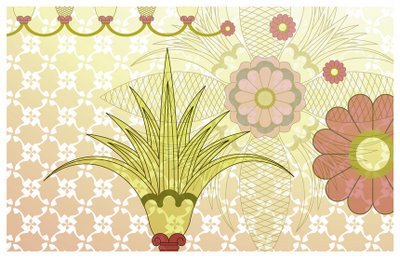
Form Follows Function:
A Design of An Assyrian Identity
April 14–30, 2006
Boston University’s College of Fine Arts is hosting the 2006 Graduate MFA Exhibitions. Sharokin Betgevargiz, a MFA candidate at the School of Visual Arts, will showcase her thesis designs at the Graphic Design Exhibition.
Using modern Assyrian letterforms and ancient Assyrian patterns, she weaves a variegated visual repetition and multilayered connection of a fragile but resilient identity that spans from Ancient Mesopotamia to current day Iraq and the forced Arabization and Kurdification of Assyrians in the region.
Reception
Thursday, April 20, 6:00-8:00pm
Drinks and food will be provided.
Boston University Art Gallery
College of Fine Arts
First Floor
855 Commonwealth Avenue, Boston
Gallery Hours
Tuesday–Friday, 10am–5pm
Saturday & Sunday, 1–5pm
Open and free to public.
Public Transportation
Directions by car
Map
Parking
Free street parking is available after 6pm.
Lot F - 808 Commonwealth Ave.
Lot C1 - Agganis Arena, 925 Commonwealth Ave.
Sunday, February 05, 2006
Artist Statement
Form Follows Function: A Design of An Assyrian Identity
Artists of non-dominant cultures have an inherent responsibility to communicate a message that is genuinely personal yet able to transcend multilayered boundaries of identity. Being Assyrian, or a displaced person in the global world, I have strengthened my ability to examine, imagine, author, create, and produce art and tell stories through my visual explorations. My native language is the basis for all of my expression, yet as a person of a culture without a country, I am free to go beyond borders and artificial constructs.
Graphic Design is a form of visual art that is concerned with the presentation and management of image and text as well as their relationships. Its primary function is to communicate by creating either a visceral reaction or to initiate an intellectual decoding process or both. The form of the neo-Assyrian alphabet, specifically Eastern Syriac letterforms, has a unique affect on my design sensibilities, as they are the core foundation of my semiotic coding of meaning. Assyrian is my mother’s language; what I heard in relation to what I saw visually and what I first coded and decoded, gives meaning to the world around me. I have chosen to examine the semiotics of this letterform along side ancient Assyrian patterns, by constructing and deconstructing their form. Through this investigation, the subject matter spans 20th Century Assyrian history, depicting an autobiographical connection to the subject.
Several unique observations have arisen, both visually and conceptually, through this investigation. The relationship of patterns and ornamentation is juxtaposed with abstract form and documentary content. Formation of a cluster of letterforms transform into a variegated visual repetition of patterns, utilizing historic and contemporary photos and text to document a specific aspect of 20th Century Assyrian history.
By cropping the form of each letter to its basic identifying feature, our relationship to letterforms is also distilled to its essence. Photographic scans are manipulated, including my childhood Assyrian notebook, along with Persian and English writing, examining their relationships, as a vehicle for learning my mother’s language, and symbolism of the letterforms. This abstraction of code allows for transcending the subjective where both Assyrian and non-Assyrian viewers can share in a profound and familiar experience; the development of an identity through language, form and culture.
Assyrian letters function as a visual tool through which I can express my design sensibility. The form of the letter holds who we are as Assyrians. Nothing can threaten the existence of this culture so long as the language remains. Despite all of the language deterioration, it is the alphabet, as the form of the language, which gives us our identity.
Sharokin Betgevargiz
MFA candidate in graphic design at Boston University
Sponsored by www.ZindaMagazine.com
With special thanks to professors Alston Purvis and Richard Doubleday, Colin Burke, Crest Graphics, Maegan BetGivargis-McDaniel, Eden Naby, my parents and the Donabed family.
Artists of non-dominant cultures have an inherent responsibility to communicate a message that is genuinely personal yet able to transcend multilayered boundaries of identity. Being Assyrian, or a displaced person in the global world, I have strengthened my ability to examine, imagine, author, create, and produce art and tell stories through my visual explorations. My native language is the basis for all of my expression, yet as a person of a culture without a country, I am free to go beyond borders and artificial constructs.
Graphic Design is a form of visual art that is concerned with the presentation and management of image and text as well as their relationships. Its primary function is to communicate by creating either a visceral reaction or to initiate an intellectual decoding process or both. The form of the neo-Assyrian alphabet, specifically Eastern Syriac letterforms, has a unique affect on my design sensibilities, as they are the core foundation of my semiotic coding of meaning. Assyrian is my mother’s language; what I heard in relation to what I saw visually and what I first coded and decoded, gives meaning to the world around me. I have chosen to examine the semiotics of this letterform along side ancient Assyrian patterns, by constructing and deconstructing their form. Through this investigation, the subject matter spans 20th Century Assyrian history, depicting an autobiographical connection to the subject.
Several unique observations have arisen, both visually and conceptually, through this investigation. The relationship of patterns and ornamentation is juxtaposed with abstract form and documentary content. Formation of a cluster of letterforms transform into a variegated visual repetition of patterns, utilizing historic and contemporary photos and text to document a specific aspect of 20th Century Assyrian history.
By cropping the form of each letter to its basic identifying feature, our relationship to letterforms is also distilled to its essence. Photographic scans are manipulated, including my childhood Assyrian notebook, along with Persian and English writing, examining their relationships, as a vehicle for learning my mother’s language, and symbolism of the letterforms. This abstraction of code allows for transcending the subjective where both Assyrian and non-Assyrian viewers can share in a profound and familiar experience; the development of an identity through language, form and culture.
Assyrian letters function as a visual tool through which I can express my design sensibility. The form of the letter holds who we are as Assyrians. Nothing can threaten the existence of this culture so long as the language remains. Despite all of the language deterioration, it is the alphabet, as the form of the language, which gives us our identity.
Sharokin Betgevargiz
MFA candidate in graphic design at Boston University
Sponsored by www.ZindaMagazine.com
With special thanks to professors Alston Purvis and Richard Doubleday, Colin Burke, Crest Graphics, Maegan BetGivargis-McDaniel, Eden Naby, my parents and the Donabed family.
Friday, February 03, 2006
Sleeva Ghatokh o'Sepa Ghatee: Our Smallest Ally
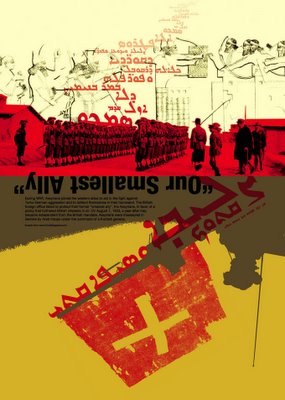 19.75" x 27.5"
19.75" x 27.5"Adobe Illustrator and Photoshop
(small copy)
During WWI, Assyrians joined the western allies to aid in the fight against Turko-German aggression and to defend themselves in their homeland. The British foreign office failed to protect their former "smallest ally", the Assyrians, in favor of a policy that furthered British interests in oil. On August 7, 1933, a year after Iraq became independent from the British mandate, Assyrians were massacred in Semele by Arab troops under the command of a Kurdish general.
Thursday, February 02, 2006
Assyrian Homeland
 19.75" x 27.5"
19.75" x 27.5"Adobe Illustrator and Photoshop
(small copy)
TURKEY
Assyrian Genocide, 1915
Two-thirds of the worlds Assyrians perished through systematic deaths by Kurds and Turks.
IRAN
Iranian Revolution, 1979
A thriving Assyrian community of 200,000 is diminished to less than 20,000.
SYRIA
Assyrian Nationalism, 1957
The Assyrian Democratic Organization is established.
NORTHERN IRAQ
Kurds Block Assyrian Voters, 2005
Kurdish Democratic Party effectively blocked the delivery of ballot boxes to six major Assyrian towns and villages in the plains around Mosul including Baghdeda, Bartilla, Karemlesh, Shekhan, Ain Sifne and Bahzan.
Wednesday, February 01, 2006
Aramaic Puzzle: Alap Beit
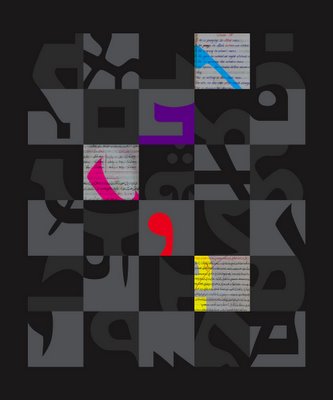
30" x 36"
Adobe Illustrator & Photoshop
Out of order, cropped and displaced, this piece examines the relationship of Assyrians with their Aramaic language, a relationship distinguished by a rich ancient history, a medieval Christain Syriac heritage, cultural values and customs, as well as survival from genocide, upheaval, assimilation, and current political and religious struggles in our homeland, Iraq.
Each letterform is cropped to examine our memory for a distinct visual form, the letters unique identifying factor. The juxtaposition of letters in the checkerboard enhances but also confuses our recognition of the letter. As we strive to recognize our letters, we strengthen our ties to our mothertongue despite the attractions of assimilation and the punishments of dispersal.
The oldest continuously written and spoken language of the Middle East is in disarray, almost lost.
25 years later, I dug out my Assyrian language notebooks. Was that really how well I wrote, I was barely a teen! Today, I seldom dream in Assyrian.
In the last page of my Assyrian notebook, I come across English sentences, with the mention of the work “Allah” reminding me of the Islamic Revolution. I placed that atop of a visual arrow facing forward, as “In the name of God”, was placed on all letterhead.
Another note page in the middle is a verb conjugation in Assyrian, with instruction of grammar taught in Persian, learning the grammar of my mother’s language by detailed instruction in Persian. The third page is an essay I wrote to an assigned topic “If someday we loose our language as we’ve lost everything, what would happen?”, placed in the bottom as we struggle to remember reading our mother’s language.
Black and dark grays symbolize our hearts, are sorrowfully longing for recognition. The colors selected are blue, yellow and red for their primary values, magenta and purple as active secondary colors. These basic colors symbolize our inherent relation to our language and the active colors target our youth. Together shaping of a forward moving arrow (left directional), as the direction of our writing, I hope to move forward against the dark pallate of our collective struggle.
Tuesday, January 31, 2006
Monday, January 23, 2006
Religious Nationalism: Malakha d'Mara d'Gulpane
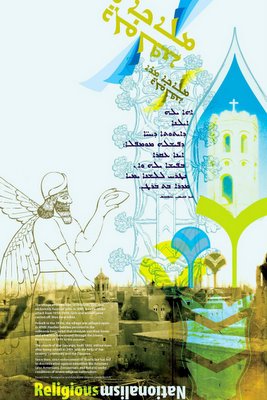
19.75" x 27.5"
Adobe Illustrator and Photoshop
(small copy)
The village of Golpashan, in Urmiyah, Iran, was exclusively Assyrian prior to WWI. It came under attack by Kurdish and Turkish Muslims from 1914–1918. Girls and women were carried off. Men were killed.
Rebuilt in the 1920s, the village was pillaged again in WWII. Hardier families remained in the area holding fast to the millennia-long belief that Urmiyah was their home. Only a fraction of the early 20thC population stayed through the Islamic Revolution of 1979 to the present.
The church of Mar Gevargiz, built in 1869, was restored in 2001 with the help of the existing community and the Diaspora.
Since then, strict enforcement of Shari’a law and severe religious nationalism has led to discrimination against Assyrians and other minorities, including Armenians, Zoroastrians and Bahais.
Excepts from “Immigration and Adjustment: Assyrian Family Records”
Sunday, January 01, 2006
College Art Association's 2006 MFA Exhibition
Form Follows Function:
A Design of An Assyrian Identity
Feb 21–24, 2006
MassArt | Godline Gallery
Boston, MA
"The best surprise was Sharokin Betgevargiz's politicized posters (she was in the graphic-design gallery) of the history of the Assyrian people in the twentieth century. Her use of images and text, both in English detailing the abuses heaped on the Assyrians by the Kurds and Arabs and in the Assyrian (Aramaic) language, whose beauty matches the calligraphy of Arabic and Hebrew words."
- Excerpts from www.collegeart.org “CAA Regional MFA Exhibition” by Christopher Howard, February 24, 2006
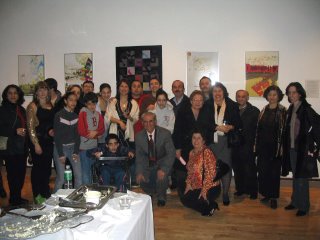

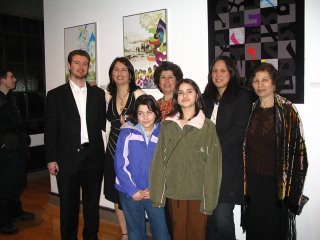

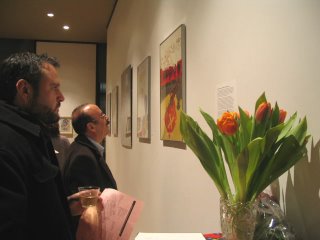
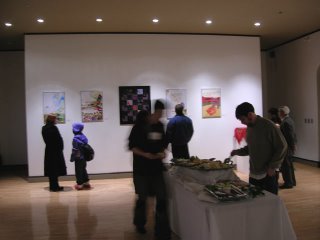


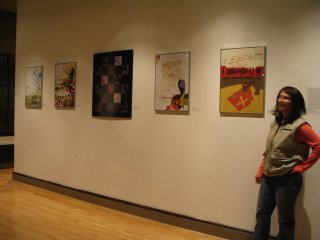
A Design of An Assyrian Identity
Feb 21–24, 2006
MassArt | Godline Gallery
Boston, MA
"The best surprise was Sharokin Betgevargiz's politicized posters (she was in the graphic-design gallery) of the history of the Assyrian people in the twentieth century. Her use of images and text, both in English detailing the abuses heaped on the Assyrians by the Kurds and Arabs and in the Assyrian (Aramaic) language, whose beauty matches the calligraphy of Arabic and Hebrew words."
- Excerpts from www.collegeart.org “CAA Regional MFA Exhibition” by Christopher Howard, February 24, 2006









